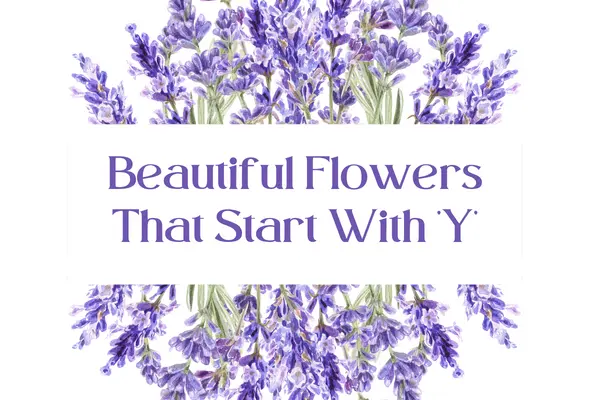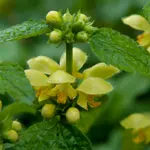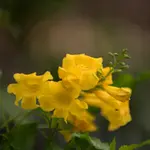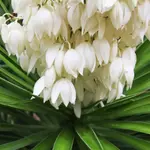The list of flowers that begin with the letter “Y” is provided below. We have concentrated on popular and simple-to-grow types.
Flowers That Start With Y – List Of Flowers That Name Starts With the Letter ‘Y’

Yarrow
Asteraceae, or Yarrow, is the common name for the genus Achillea, which contains more than 100 species of flowering plants and is indigenous to Europe, Asia, and North America.

These hardy, aromatic perennials are renowned for their flattened flower clusters in a rainbow of colors and their feathery, ferny, grey-green foliage. They are well-liked for use as border and rock gardens, beds, and edging plants.
The Greek hero Achilles inspired the genus’s name. The Trojan War wounds of Achilles and his soldiers were allegedly treated with Yarrow. Although other species of the Achillea genus may also go by the common name “yarrow,” it usually refers to Achillea millefolium.
For thousands of years, achillea has been used as a medicinal plant. One of the oldest known medicinal plants, it was used by Neanderthals, the Chinese, Native Americans, and Ancient Greeks. One of the most adaptable healing plants, it is used today to treat wounds, infections, fevers, cramps, menstrual irregularities, and skin irritations and irritations.
Additionally, the plant has been used to lessen the signs and symptoms of a number of neurological conditions, such as multiple sclerosis, epilepsy, encephalomyelitis, Alzheimer’s, and Parkinson’s diseases. It also aids in the treatment of digestive problems like stomach pain and ulcers.
Achillea has a long history of use in religious rituals and battles against evil and negative energy. It served as a talisman or amulet to ward off demons or expel evil from a person.
Yellow Archangel
Lamiastrum galeobolon, a herbaceous perennial plant used as a low-growing ornamental, is also known as the “yellow archangel.” Lamiastrum, which refers to the similarly-appearing deadnettles that are also grown as decorative ground covers, means “resembling Lamium.”

The name Galeobdolon luteum and its synonym Lamium galeobdolon were once used incorrectly in the nursery industry to describe this species.
This native of Eurasia belongs to the Lamiaceae family, and it is hardy in zones 4-9. The species is regarded as a noxious weed in western Washington State and other parts of the Pacific Northwest where it has escaped cultivation and infested forested areas. Variegated forms of this plant are common garden plants.
Yellow Bell
Esperanza, also known as Yellow bells, is an irregularly shaped, deciduous shrub that grows between 3 and 9 feet tall in more southern varieties. It has a number of stems and thin, upright branches. In contrast to the lance-shaped, olive-green leaves, large, yellow flowers with a trumpet-like shape are very striking. In the autumn, long, thin pods are noticeable.

Its vast natural range stretches from south Texas to Arizona in the west, through Mexico and Central America to southern South America up to northern Argentina, and from southern Florida to much of the Caribbean in the south. Tecoma stans var. is a plant that is indigenous to Mexico and the southwest United States. angustata, which is less tall, more tolerant of drought, and more resilient to cold than some tropical varieties offered by nurseries.
Anyone who has witnessed this plant in bloom can appreciate why it has a name like Yellow bells because it produces fantastic, eye-catching yellow blossoms. It has gained popularity as a landscaping plant, valued for both its spectacular appearance and resistance to drought.
Yellow-Eyed Grass
Wetland herbaceous plants called yellow-eyed grass plants have narrow stalks and grassy leaves. At the very tip of each stalk are one or two three-petalled yellow or white flowers. Over 250 species of yellow-eyed grass can be found worldwide, making this family a sizable one.

While hardiness varies, USDA plant hardiness zones 8 and above are suitable for growing the majority of yellow-eyed grass varieties. Learn how to grow yellow-eyed grass in your garden by reading on.
In the fall, sow yellow-eyed grass seed outdoors in a cold frame or directly in the garden. In moist, well-drained soil, yellow-eyed grass thrives. Alternately, stratify the seed for two weeks in the fridge. Put the seeds in a plastic bag with some damp peat moss to stratify them. Plant the seeds indoors two weeks later. In nine to 14 days, the seeds should begin to sprout if the potting is kept moist.
Yucca
About 50 species of evergreen perennials, shrubs, and trees make up the genus Yucca. It is a member of the Asparagaceae family and is indigenous to the Caribbean, Mexico, and North America.

These adaptable and simple-to-care-for plants are available in a wide range of sizes and shapes. They are renowned for their stunning bell-shaped flowers and prickly sword-like leaves. The flowers are typically white or cream in color and fragrant. Due to their minimal maintenance requirements, they are perfect for people who are time-constrained or frequently travel.
The Taino (native Caribbean) name for the plant Yuca is where the genus name originates.
Carl Linnaeus named the genus “Yucca” in error because it is a Latinized version of the Caribbean word for cassava, “Yuca” (Manihot esculenta).
They were known as “Lamparas de Dios” or “the Lamps of God” by the early settlers of North America because of the lovely white flowers that appeared to light the way for them during their perilous and lengthy journey.
Yucca represents defense, purity, and purification. Yucca reproduces in a mutualistic relationship with Tegeticula moths, which pollinate the plant and feed on its nectar. Both organisms are dependent on one another to survive because their relationships are so close. It is an illustration of obligate mutualism, in which both species are dependent upon one another in order to survive.
Yucca is one of the most well-known plants for cleaning the air and removing toxins, according to NASA research. It is a wonderful indoor plant that can improve your focus, reduce stress, and clean the air in your home. Without naming a specific species, New Mexico chose the yucca as its state flower in 1927.
Herbalists prize this plant for its therapeutic qualities in addition to its nutritional value.
It includes crucial nutrients like calcium, iron, and vitamins B and C. The herb yucca has been used to treat migraines, colitis, arthritis, and hypertension. It has antioxidant, antifungal, and anti-inflammatory properties.
Native Americans have used the plant for a variety of purposes for thousands of years.
The Soaptree Yucca (Yucca elataroots )’s and trunk were used by the Native Americans to make soap. Additionally, they made belts, clothing, sandals, and baskets out of the fiber found in Soaptree Yucca leaves. Yucca roots were used as medicine by the Cherokee tribe to treat sores and rashes. The Navajos also ceremonially use the leaves.
Yucca is an ingredient in many organic skin care cosmetics, so it can also assist you with your beauty needs.